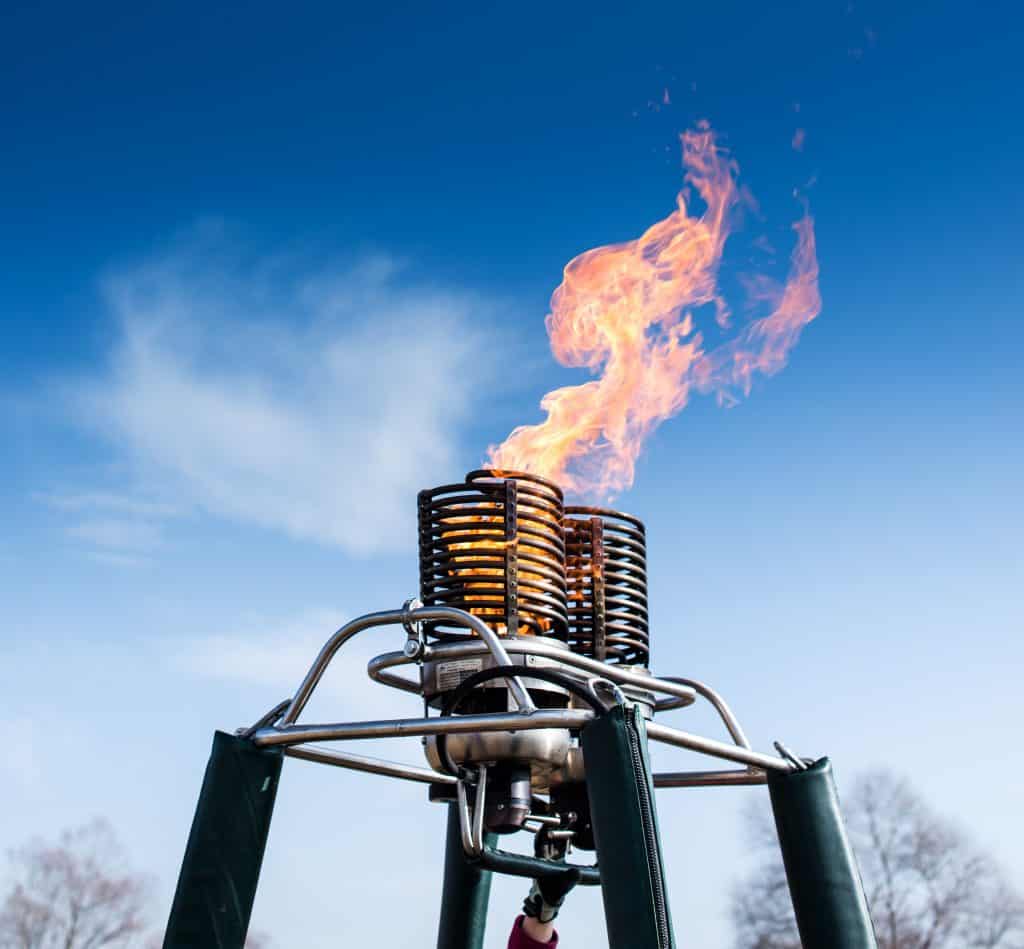
Have you ever been watching a cartoon with a hot air balloon and wondered what the bags on the balloon’s basket were? Well, you no longer need to wonder because in this shocking tell-all expose, we’ll tell you exactly what those bags are!
As it turns out, there are no bags attached to the baskets of hot air balloons. Ballasts, heavy objects such as sandbags or lead weights, are attached to gas balloons to help stabilize the aircraft. The ballasts also help the pilot control the altitude of the gas balloon. They are cut off the basket as necessary.
So how did we get tricked into believing that hot air balloon attached sandbags to their baskets? And how exactly do gas balloons use these ballasts? These questions ad more answered below!
What Ballasts Are

Ballasts are weights attached to gas balloons that help the pilot balance the balloon and keep a good elevation. Ballasts are unique to gas balloons because of how gas and hot air balloons work.
Gas balloons are different in many ways from their hot air cousins! The biggest difference, of course, is what actually causes the balloons to fly. The difference between the two is illustrated in their names!
Hot air balloons fly because of hot air. And, you probably guessed it, gas balloons fly because of gas! And we aren’t talking about the kind your wife gets mad about!
As it turns out, gas balloons don’t mix well with hot air balloons. I’ve illustrated this point with this simple but powerful equation:
Gas+Heat=Boom
-Me
Gas balloons are filled with a gas that is lighter than oxygen, usually hydrogen or helium. The lift created by these “lighter than air” gases causes the balloon to rise into the air!
The difficulty is that once a gas balloon is filled with gas, that’s it. It’s full. Filled. Lleno. There’s nothing left to do. However much gas is in that balloon is how much gas there will ever be in that sucker.
When first filled, the balloon has a lot of lift. Without enough weight, it would just keep rising and rising until it began to plummet to a very rough landing.
So ballasts add some initial weight to keep the balloon at a desirable altitude. As gas slowly leaks out of the balloon, the ballasts are cut since they’re no longer needed.
Ballasts can also be used to balance a gas balloon. Just like hot air balloons, it’s important that weight is evenly distributed in a gas balloon. Ballasts can help with that.
Traditionally, ballasts have just been sandbags. It’s these sandbags that have given the impression that hot air balloons attach bags to the sides of their baskets!
History of Ballasts

Where did these ballasts come from? It sounds like hot air balloons are a lot more efficient, so how did we end up with these barbaric sandbags in the first place?
Well, the history of ballasts is directly connected to the history of ballooning. It wasn’t too long ago that gas balloons ruled the sky while hot air balloons were deemed totally impractical!
Hot air balloons were invented by the Montgolfier brothers, two inventors in France in the late 18th century. Their invention shocked the world! These were the first manned flying devices!
These early hot air balloons followed the same principles as modern hot air balloons, but with much less precision. A lack of molecular understanding caused big problems for the Montgolfier brothers.
You see, they knew that flight had something to do with fire, but they thought their balloons flew because of the smoke, not the hot air! You can probably imagine how this misunderstanding would hinder their invention.
Instead of trying to create maximum heat, they tried to create maximum smoke. They used wet wood and fresh, green leaves to create billowing smoke in their balloon.
It was also difficult to control how much fire they had, when it started, and when it stopped. The modern burner system would be invented until the mid 20th century.
Because of these (and other) problems, the hot air balloon was abandoned in favor of a new alternative: the gas balloon. Because gas wasn’t a precious commodity back then, this alternative was safer and cheaper!
Of course, the gas balloons had just one problem. When they got going, they really got going. How could this problem be overcome? How could the gas balloons maintain a safe altitude?
Well, ballasts were the answer. It was decided that the best way to keep gas balloons closer to the earth, sandbags would be attached to the sides of the baskets.
When gas got low, the ballasts were cut. A perfect solution! Of course, as gas balloons fell out of favor, ballasts went with them. Ballasts have lived on in modern popular culture by being misattributed to hot air balloons!
How We Got Tricked

So, how exactly did we get tricked into believing that hot air balloons use sandbags? Well, it’s actually pretty simple. As it turns out, most people can’t tell the difference between hot air balloons and gas balloons by just looking at it.
So, if you see a gas balloon that has some ballasts hanging off the side, it would be pretty easy to assume that you saw a gas balloon with ballasts hanging off the side!
In fact, when I brought this up in my office (that is full of people who are outdoors experts), most of them couldn’t tell the difference between a gas balloon and a hot air balloon.
Of course, for balloon enthusiasts, this is a pretty egregious mistake. But to the majority of the population, it might be surprising to know that there are two different kinds of large flying balloons.
Now, my wife is a very talented oil painter, and she often reminds me that many artists think with their heart before their head. That’s really great because it makes their art mesmerizing!
Unfortunately, it also means that art doesn’t always accurately reflect reality. For example, a lot of early Christian art drives Christian historians crazy because it can give viewers the wrong impression of history.
The same is true of ballooning. Many painters and animators have enjoyed including ballasts into their hot air ballooning artwork! There’s nothing inherently wrong with that, but it could give viewers the wrong impression.
And that’s exactly what has been happening! That’s basically how we got tricked. But now you know better!
What Hot Air Balloon Use Instead

So if hot air balloons don’t use ballasts, how do they maintain a desirable elevation? Well, in order to understand that, you need to have a basic understanding of how hot air balloons work.
Hot air balloons are actually pretty simple at a basic level. They have three major components: an envelope, a basket, and a burner system. Put these together and you have a hot air balloon!
The basket is what actually holds the passengers and pilot. It also holds the fuel tanks! Baskets are usually made out of wicker, but some lightweight baskets have an aluminum frame.
Just above the basket is the burner system. One or more burners are connected to the fuel tanks. When they’re turned on, the burners shoot flame into the envelope, heating the air inside.
That leads us to the envelope! This is the huge bag that looks like a giant balloon! The envelope is filled with air before takeoff, and as the air is heated by the burners, the whole balloon lifts into the air!
As long as the air is hot enough to make the balloon buoyant, the balloon rises. If it’s too cool, the balloon falls. If the air is just at the right temperature, it will remain at a steady altitude.
Because hot air balloons rise and descend based off of the temperature of the air inside the envelope, there’s no need for ballasts! All of that can be controlled by the burners!
So no ballast? No problem! This is one of the reasons why hot air balloons are easier to use than gas balloons. Now you know why hot air balloons don’t use any sandbags!
